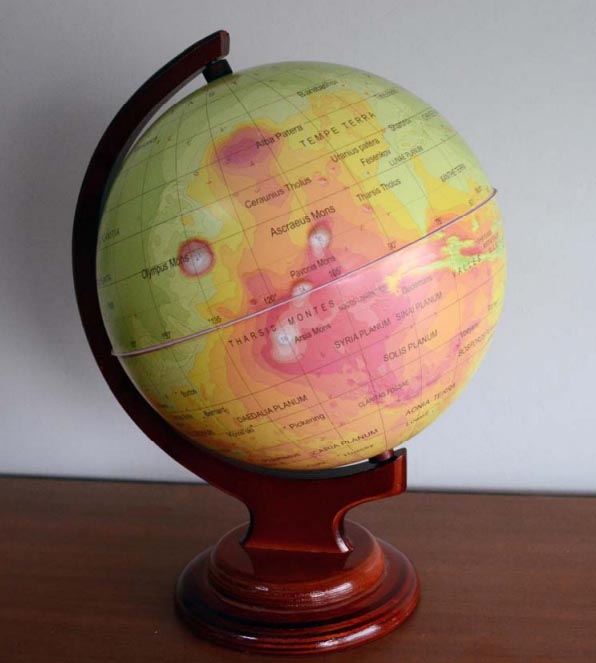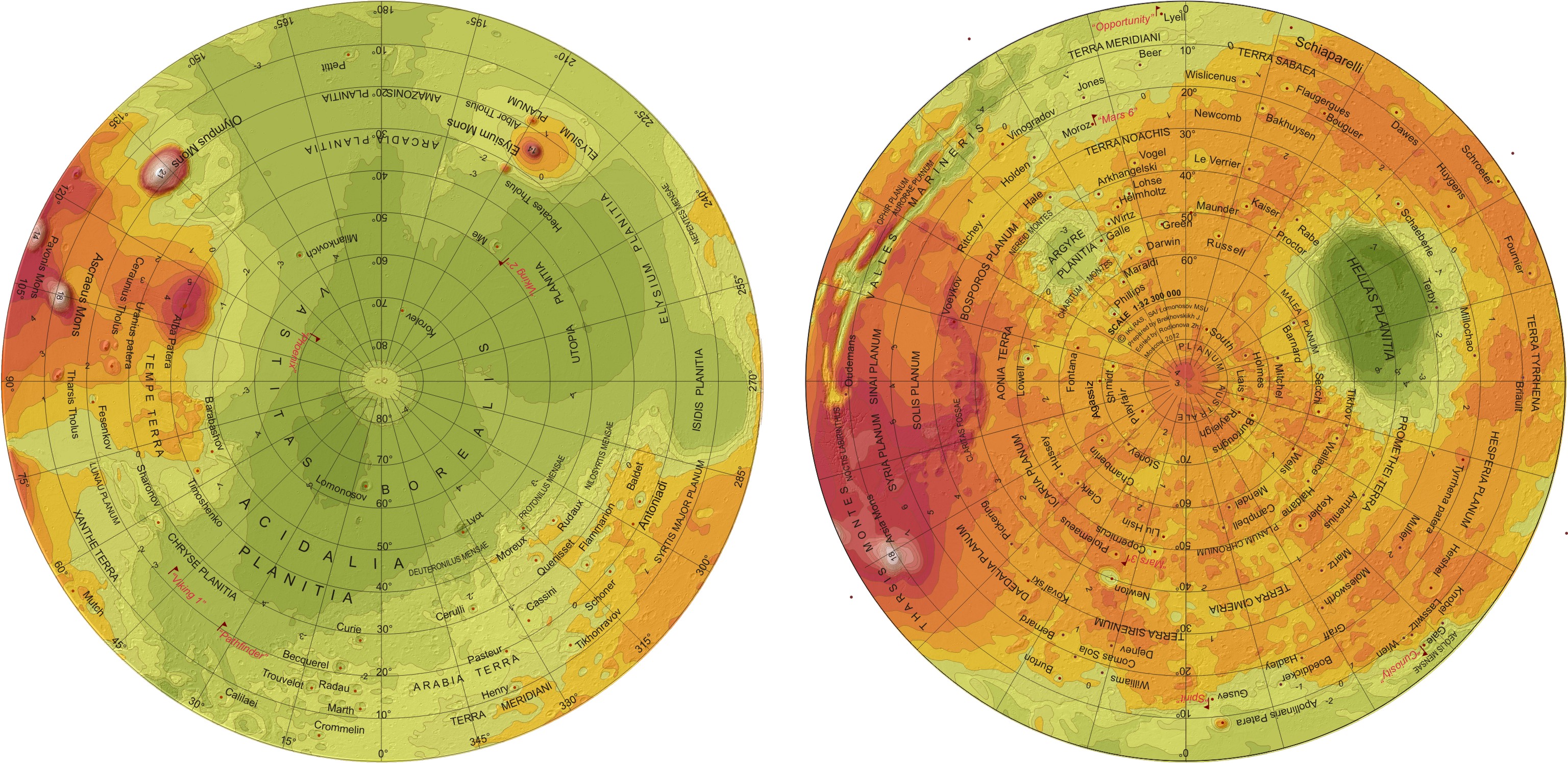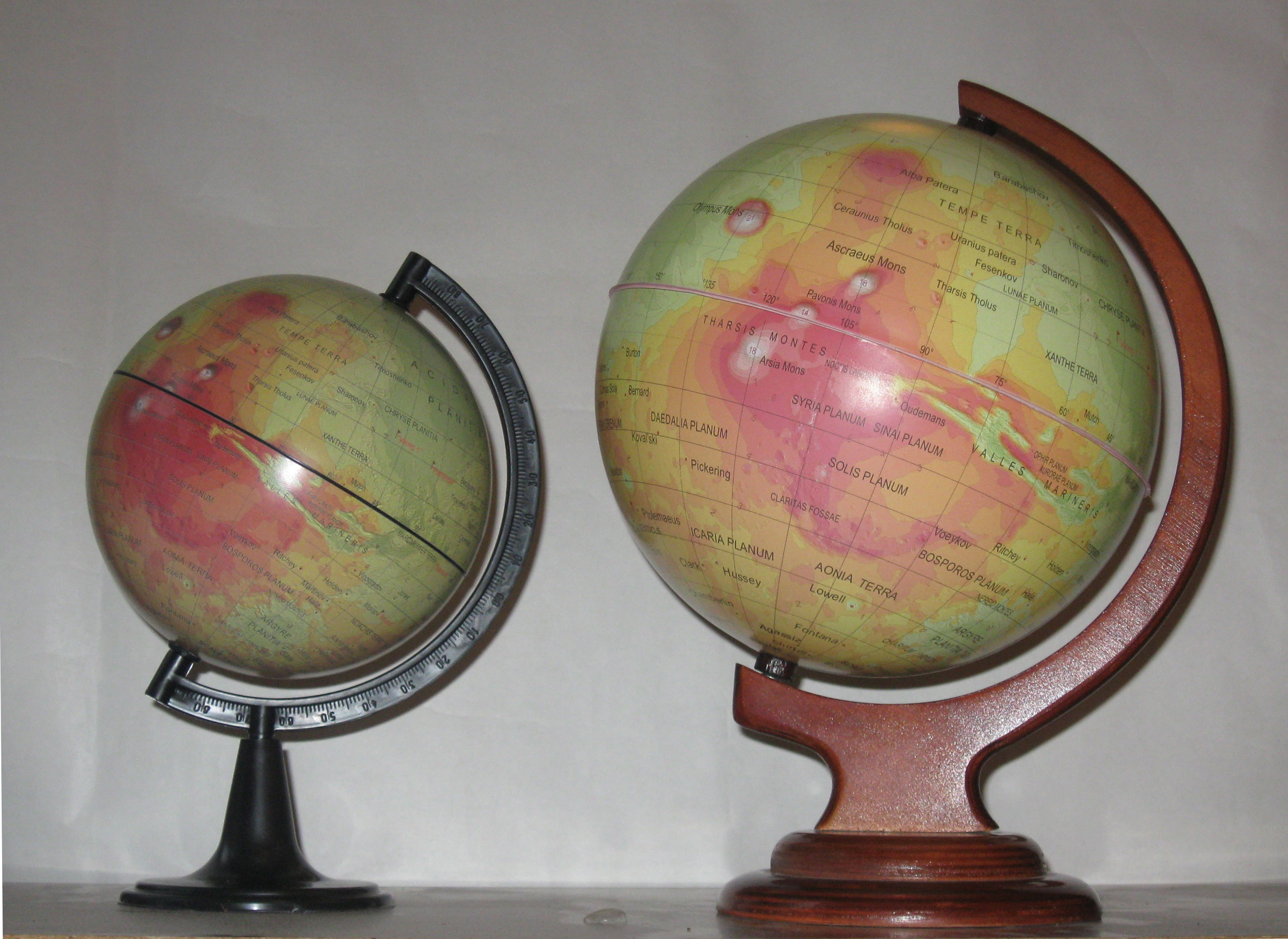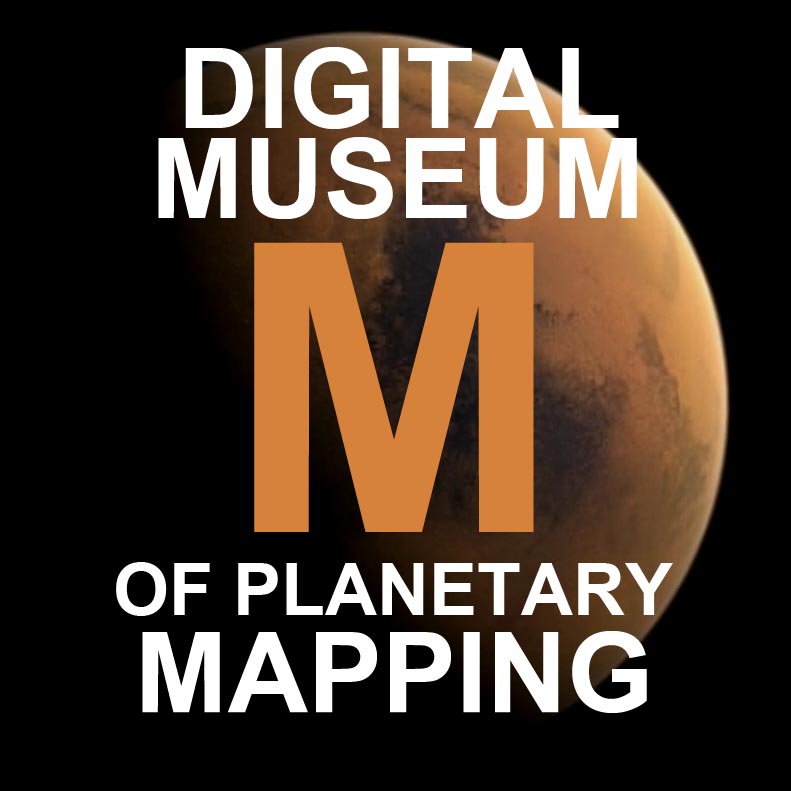Hypsometric globe of Mars (2012)
Publisher: Sternberg State Astronomical Institute (SAI) in cooperation with the Department of Cartography and Geoinformatics Faculty of Geography Moscow State University
Source of data: MOLA; showing landing sites
Cartographers: Zh. F. Rodionova, J. Brekhovskikh (Space Research Institute) (color scheme, based the previous Hypsometric map of Mars, scale 1:26 000 000 [Ilukhina, 2004])
Height scheme: The height scale contains 21 step heights. To a height of 8 km the contour interval is 1 km. Up to 12 km the interval is 2 km. Above 12 km the interval is given within 10 km.
Technology: Thermoplastic globe.
The technology to create the globe using thermoplastic materials provides for forming the hemispheres of the sheets with the printed image on them and gluing the hemispheres at the equator. The original hemisphere prepared with the image is placed in the plastic molding device, and at high temperature using a metal template the hemispheres are pressed. Western and Eastern hemispheres were recut as the northern and southern hemispheres in the azimuthal projection taking into account the law of deformation occurring during forming of the p lane in the hemisphere. Transforming the original cartographic image on the plane into an undistorted image on the field in this way can only be done, if the distortion of the lengths of the meridians in the original projections will be constant equal to m = 2/, and the distortion of the lengths of the parallels of latitude be a function of the form n = (-2):(cos) (Boginskiy 1990). This requirement corresponds to an azimuthal equidistant projection to the plane of section passing through the center of Mars. The projection is an orthogonal grid. The parallels are represented by equally spaced concentric circles, and meridians – the straight lines emanating from the center of the circles. When placing the original map, we took into account the fact that when forming the hemispheres the original image is stretched by more than half. As the tension is not even the names of relief forms were arranged parallel to the equator.
Softwares used: ArcGis10, Corel Draw
References:
Zh. F. Rodionova , J. A. Brekhovskikh [Родионова Ж.Ф., Бреховских Ю.А] (2013) Hypsometric Globe of Mars – 3D Model of the Planet (#610) . ICC 2013, Dresden.
Ilyukhina J.A., Rodionova Zh.F. (2004) Gipsometricheskaya karta Marsa. 1:26 000 000. Moscow, Nauka.
Новая карта рельефа Марса http://ziv.telescopes.ru/rubric/astronomy/?pub=8

One of the 10 test globes



